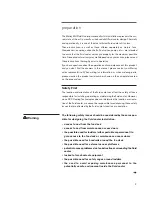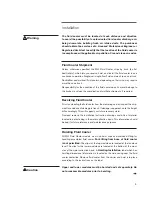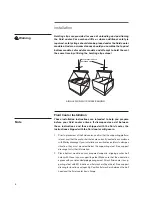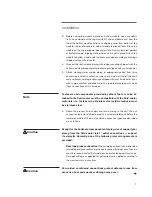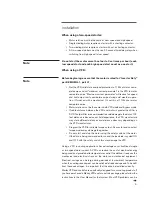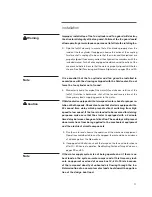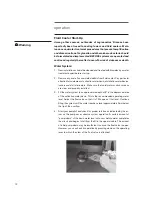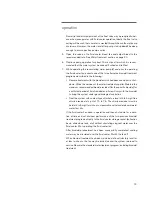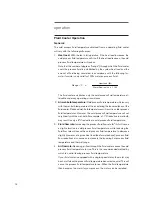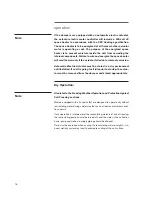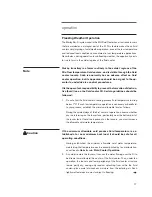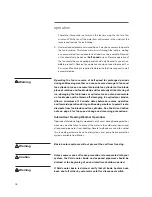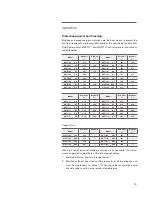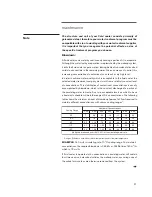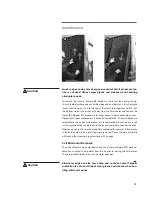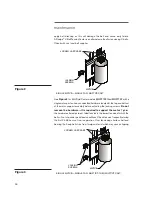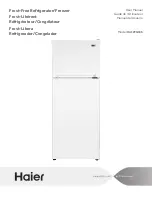
11
Improper installation of the fan cylinder and fan guard will destroy
the structural integrity of the fan guard. Failure of the fan guard could
allow operating or maintenance personnel to fall into the rotating fan.
3. Spin the fan(s) manually to assure that all fan blades properly clear the
inside of the fan cylinder. If equipped, observe the action of the coupling
(or drive shaft couplings) to be sure that the motor and Geareducer are
properly aligned. If necessary, correct the alignment in accordance with the
included manual. For belt drive equipped models observe the action of the
sheaves and belts to be sure that the motor is properly aligned with the fan
sheave. See Belt Tensioning and Sheave Alignment on pages 25 and 30.
It is essential that the fan cylinder and fan guard be installed in
accordance with the drawings shipped with the fluid cooler. Do not
force the fan cylinder out of round.
4. Momentarily bump (energize) the motor(s) and observe rotation of the
fan(s). If rotation is backwards, shut off the fan and reverse two of the
three primary leads supplying power to the motor.
If fluid cooler is equipped with a two-speed motor, check for proper ro-
tation at both speeds. Check also to see that starter is equipped with a
20 second time delay which prevents direct switching from high
speed to low speed. If the fan is intended to be reversed for deicing
purposes, make sure that the starter is equipped with a 2 minute
time delay between changes of direction. These delays will prevent
abnormal stress from being applied to the mechanical equipment
and the electrical circuit components.
5. Run the motor and observe the operation of the mechanical equipment.
Operation should be stable, and, if equipped, there should be no evidence
of oil leakage from the Geareducer.
6. If equipped with belt drive, check the torque on the fan and motor sheave
after 10 - 60 hours of operation. See Bushing Fastener Torque Values on
pages 25 and 30.
If the water supply system is not being operated—or if there is no
heat load on the system—motor amps read at this time may indi-
cate an apparent overload of as much as 10–20%. This is because
of the increased density of unheated air flowing through the fan.
Determination of an accurate motor load should await the applica-
tion of the design heat load.
Caution
installation
Note
Note
Warning



